Pat Mora's Blog, page 83
February 14, 2011
Happy Valentine's Day!
Happy Valentine's Day to each of you who visits my blog! In Spanish, this day has various names. My favorite is
El día del amor y de la amistad
because the name celebrates both love and friendship.

Love is all around ... all year long. My book for teens, Dizzy in Your Eyes , is a collection of 50 poems about love.
 "Teachers in need of a fresh new avenue for teaching poetic form, lovers of language, and teens in search of a broader definition of love will find it here." -
School Library Journal
"Teachers in need of a fresh new avenue for teaching poetic form, lovers of language, and teens in search of a broader definition of love will find it here." -
School Library Journal


Love is all around ... all year long. My book for teens, Dizzy in Your Eyes , is a collection of 50 poems about love.
 "Teachers in need of a fresh new avenue for teaching poetic form, lovers of language, and teens in search of a broader definition of love will find it here." -
School Library Journal
"Teachers in need of a fresh new avenue for teaching poetic form, lovers of language, and teens in search of a broader definition of love will find it here." -
School Library Journal
Published on February 14, 2011 11:46
February 10, 2011
Creativity Interview: Marina Tristan
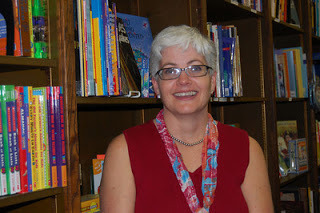 What a pleasure to introduce blog visitors to my friend Marina Tristan. One of the joys of this blog is connecting visitors to people I like, respect and find interesting. How long have I known Marina? Have I ever not known her I ask myself. My first book, CHANTS, a poetry collection was published in 1984 by Arte Público Press, and I'll always be grateful to AP for that act of faith. Marina and her colleague Carmen Peña Abrego are so essential to my relationship and my mental image of AP, that I can't imagine the Press without them. Ever modest, in the interview below, Marina has focused on her practical skills, and they are many. What matters to me about Marina is her caring, her thoughtfulness, her warmth, her reliability, her laugh. I've never met a single person who doesn't like and respect her. A high standard for the rest of us.
What a pleasure to introduce blog visitors to my friend Marina Tristan. One of the joys of this blog is connecting visitors to people I like, respect and find interesting. How long have I known Marina? Have I ever not known her I ask myself. My first book, CHANTS, a poetry collection was published in 1984 by Arte Público Press, and I'll always be grateful to AP for that act of faith. Marina and her colleague Carmen Peña Abrego are so essential to my relationship and my mental image of AP, that I can't imagine the Press without them. Ever modest, in the interview below, Marina has focused on her practical skills, and they are many. What matters to me about Marina is her caring, her thoughtfulness, her warmth, her reliability, her laugh. I've never met a single person who doesn't like and respect her. A high standard for the rest of us.An introduction : My name is Marina Tristán, and I'm a mother, daughter, sister, friend. And the assistant director of Arte Público Press, the oldest publisher of U.S. Hispanic literature.
1. Do you think of yourself as creative?
MT: Not at all! If you ask my friends and colleagues to describe me in a word or two, they would say that I'm practical, matter of fact, pragmatic. I don't think I was encouraged to be creative when I was a child. Or maybe it's just my personality, or maybe it's that life demands I be productive. I certainly enjoy and appreciate all kinds of creativity, from literature to film and music. I have read voraciously all of my life, and I listen to a wide array of music constantly. But when people ask me if I write, I always say "No!" I have come to realize that I DO write, though it's usually communication that's geared to being clear and efficient (another word my friends would use to describe me). But when I write copy to describe books that we publish, there's definitely an element of creativity involved. What words and images should I use to intrigue potential readers without giving the story away?
2. How do you nurture your creativity?
MT: At this point in my life, it's important to nurture creative thinking in ways that don't require much of a learning curve. Someday I'll take knitting and dance lessons. But for now, because I'm a reader, I consciously hang on to words, phrases, headlines. I read the newspaper every day, not only to be informed, but to be inspired. I'm a fan of NPR's Storycorps and tune into that kind of programming for inspiration. I also make time for movies and live performances to fulfill my appreciation for creative arts.
3. Do you have a space that helps you be more creative?
MT: The kitchen, at least when I'm not cooking for company! But seriously, I'm fortunate to work with a group of smart and creative women who are great to brainstorm with. We enjoy gathering around the table in my office and debating which words or phrases are just the right ones to describe authors, books, events. It's important, I think, to be able to throw out ideas without fear of embarrassment or humiliation. The work we do in promoting books and authors published by Arte Público is made more powerful by our collaborative spirit.
4. In what ways does creativity shape your work and your life?
MT: I think "creativity" has been an important component in my life as a way to make things work. Whether we're short of resources at work—human or financial—or I'm juggling too much between responsibilities as a mother, daughter, or friend, thinking "creatively" helps me to do more than I initially think I can. And of course I have been fortunate to be involved with books and authors for 25 years at Arte Público, and working in an environment where producing books is our daily work means that creativity is something I experience daily.
5. Has any book been particularly helpful in trusting or developing your creativity?
MT: Sometimes the simplest concepts are the most creative. I'm excited about a bilingual picture book Arte Público is publishing this spring. The Land of Lost Things/ El país de las cosas perdidas epitomizes imagination and creativity. It's about a young boy who loses his blue pencil and imagines entering—through his pencil box—a strange and mysterious land.

Published on February 10, 2011 09:38
February 3, 2011
A New Día Dynamo
 When I met Mark Smith at the Austin Public Library in 1997, he was Director of Communications at the Texas Library Association (TLA). Mark was organizing tapings for the PSA video for "Read for Your Life", a TLA media campaign. I believe Jeanette Larson was there and Pat Smith, TLA's dynamic Executive Director, who always supports me and Día. Mark has instinctively understood Día's importance and potential and has articulated his commitment within ALA. In California, Mark has been a catalyst for Día's growth state-wide, an administrator who invests in people and who works to connect America's diverse children to literacy. Gracias, Mark!
When I met Mark Smith at the Austin Public Library in 1997, he was Director of Communications at the Texas Library Association (TLA). Mark was organizing tapings for the PSA video for "Read for Your Life", a TLA media campaign. I believe Jeanette Larson was there and Pat Smith, TLA's dynamic Executive Director, who always supports me and Día. Mark has instinctively understood Día's importance and potential and has articulated his commitment within ALA. In California, Mark has been a catalyst for Día's growth state-wide, an administrator who invests in people and who works to connect America's diverse children to literacy. Gracias, Mark!I . When and how did you become interested in sharing bookjoy?
MS: I have been convinced that books and reading can change lives since I was a teenager. I loved reading when I was a child and my love of books has always been a sustaining part of my life. My work as a librarian has given me the perfect opportunity to work in a career where I can encourage and promote reading on a systemic level.
2. How did you first learn about Día and what has been your experience with Día?
MS: I first learned about Día when I worked for the Texas Library Association and met Pat Mora, Oralia Garza de Cortes and others who were using Día as a vehicle to encourage reading as well as a respect for multicultural expression in children's books. In moving to California and working with libraries here, I was eager to try to promote Día in our communities and on a statewide basis. 2011 will mark the 8th annual Día celebration in the Riverside County System and we hold Día events in all 33 of our libraries here, organized by our very talented outreach coordinator, Arlene Cano. I have also worked with other librarians in California to try to promote a statewide Día celebration through the California State Library.
3. What are your hopes for Día 2011, Día's15th Anniversary?
MS: I continue to hope that more and more libraries will participate in this important celebration. I hope that more states will become so-called "Día states" and I remain hopeful that the Association for Library Services to Children, the American Library Association and other library associations will recognize the huge potential of Día and actively promote and encourage Día celebrations in all libraries in the U.S.
4. What helpful tip(s) do you have for those organizing a Día event for the first time?
MS: Keep it focused on books and reading first and remember that a modest program is much better than no program at all.
5. What is your favorite example of Bookjoy as either a child or an adult?
MS: I will never forget the experience of seeing Pat Mora reading to a group of parents and children at our first annual Día event under a shady tree at our Coachella Library. While they were transfixed to have a real published author read to them, I clearly observed the full transformative power of Día.
6. What are you reading now?
MS: A Swedish mystery novel called Three Seconds, but in my defense, I just finished Feast of the Goat by Mario Vargas Llosa.
______________________________
News
This week, SLJ's Curriculum Connections features many authors many authors, including myself, talking about a favorite children's book about the black experience. We enjoy children's books by African American authors and illustrators all year long. Black History Month, Hispanic Heritage Month, etc. serve as opportunities to savor the work of those who weren't always seen as creators of books for America's children.
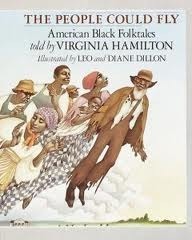
Published on February 03, 2011 08:57
February 2, 2011
15 Día Nuggets: #7 Día's Full Name in 15 Languages
 We're catching up with the Día Nuggets, posting #7 today, resulting in #s 1-8 available individually and as a downloadable packet.
We're catching up with the Día Nuggets, posting #7 today, resulting in #s 1-8 available individually and as a downloadable packet. To assist those of you planning Día celebrations at your schools, libraries, etc., we're sharing 15 Día Nuggets, 15 lists of 15 items to assist you in your planning. During our second Díapalooza during April 2011, we'll showcase the 15 Día Dynamos, 15 Mora Award winners and the 15 Día Nuggets, etc. Click here to read blog posts from our first Díapalooza!
15 Día Nuggets for Día's 15th AnniversaryNugget #6 What Every Día Advocate Needs to KnowEl día de los niños, El día de los libros/Children's Day, Book Day 1. American Sign Language: click here to view video
2. Chinese:

3. Croatian: Dječji dan, Dan knjiga
4. French: Le Jour des Enfants, Le Jour de les Livres
5. German: Kinderstag, Der Tag der Bücher
6. Greek: Ημέρα του Παιδιού, ημέρα βιβλίου
7. Hindi: Bacche ka din, Kitab ka din (Punjabi: Bacche da din, Kitab da din)
8. Italian: La Festa dei bambini, La Festa dei libri
9. Navaho: Ałchíní Baa Hózhóogo Bee E'e'aah Naaltsoos Wólta' Bee E'e'aah
10. Polish: Dzień Dziecka, Dzień Książki
11. Portuguese: Dia da criança, Dia do livro
12.Russian: Детский день, книжный день OR День де т ей, День книги
13. Swahili: Siku ya Watoto, Siku ya Vitabu
14. Tagalog: Ang araw ng bata, Ang araw ng aklat
15. Vietnamese: Ngày Nhi-đồng/Ngày Thư-viện
Published on February 02, 2011 07:35
January 27, 2011
Introducing a Teacher and a Writer
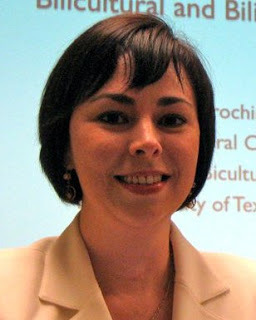 Let me introduce you to two new friends, both bright and talented Latinas. I enjoyed lunch with each of them while we were at NCTE in Orlando last year. First, congratulations to Dr. Carol Brochín Ceballos for recently receiving the Outstanding University English Language Arts Educator Award from the Texas Council of Teachers of English Language Arts. Yea, Carol! Carol is a faculty member in the English Department at UT El Paso, the department I studied in for my Bachelors and Masters degrees. The program she's in didn't exist when I was a student in my home city. How the campus has changed, and Carol is a wonderful addition. Carol and I share the pleasure and perspectives of being from the Texas border.
Let me introduce you to two new friends, both bright and talented Latinas. I enjoyed lunch with each of them while we were at NCTE in Orlando last year. First, congratulations to Dr. Carol Brochín Ceballos for recently receiving the Outstanding University English Language Arts Educator Award from the Texas Council of Teachers of English Language Arts. Yea, Carol! Carol is a faculty member in the English Department at UT El Paso, the department I studied in for my Bachelors and Masters degrees. The program she's in didn't exist when I was a student in my home city. How the campus has changed, and Carol is a wonderful addition. Carol and I share the pleasure and perspectives of being from the Texas border. Now let me introduce you to a new writer from Florida, Christina Díaz Gonzalez, who has published her first book, The Red Umbrella. How exciting! Her book is published by Knopf, a division of Random House that has been very supportive of my work including my work on Día. Christina, a lawyer, is teaching me about the Cuban experience in the U.S., especially in Florida. I'm wishing Christina a long and rewarding writing life.
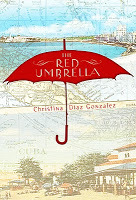 1. Tell us about yourself.CDG: I am the author of The Red Umbrella, a young adult novel that is loosely based on my parents' and mother-in-law's experience in coming to the U.S. from Cuba through the historic Operation Pedro Pan (the largest exodus of unaccompanied minors in the Western hemisphere---over 14,000 Cuban children were sent to the US by themselves during 1960-62). Having my debut novel published was a dream come true. I remember getting the call from my editor at Random House and how I literally did a "happy dance" when I realized people everywhere would be reading what I wrote. What made it made even more special was the fact that this book was a tribute to what my parents and the over 14,000 Cuban children experienced during Operation Pedro Pan. I was going to get to tell a version of the immigrant story and showcase that incredible spirit of American generosity. I couldn't have asked for more!
1. Tell us about yourself.CDG: I am the author of The Red Umbrella, a young adult novel that is loosely based on my parents' and mother-in-law's experience in coming to the U.S. from Cuba through the historic Operation Pedro Pan (the largest exodus of unaccompanied minors in the Western hemisphere---over 14,000 Cuban children were sent to the US by themselves during 1960-62). Having my debut novel published was a dream come true. I remember getting the call from my editor at Random House and how I literally did a "happy dance" when I realized people everywhere would be reading what I wrote. What made it made even more special was the fact that this book was a tribute to what my parents and the over 14,000 Cuban children experienced during Operation Pedro Pan. I was going to get to tell a version of the immigrant story and showcase that incredible spirit of American generosity. I couldn't have asked for more! 2. Do you think of yourself as creative? CDG: This is an interesting question because I've never considered myself to be creative…I was just a girl with a very vivid imagination who loved to read and write. However, the more I think about it, I suppose all writers are creative… so yes, I guess I am creative!
3. How do you nurture your creativity?
CDG: I am inspired by so many things. Sometimes it's art, music, books, movies, tv or just observing the world around me. I try to stay open to all ideas…wherever they come from.
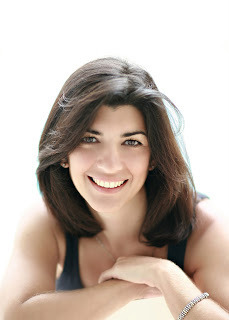
4. What are your challenges in your creativity practices? Is fear an element?
CDG: Oh my, fear is ALWAYS something to be reckoned with and overcome. Self-doubt tries to rear its ugly head while I'm writing and it is a battle to ignore it. Then, when the book is done, there are the nagging questions of whether others will love it. I've found that the only way I can move forward is to focus on the story itself and trust that others will enjoy reading it as much as I enjoy writing it.
5. Do you have a space that helps you be more creative?
CDG: I don't have one particular spot for creativity. It all depends on the book I'm writing. It seems that certain books call for me to be in a bright, sunny spot and other require a more gloomy setting.
6. How do you find time to be creative; to develop your creative life? Do you set aside a regular time each day or go on a retreat, etc?
CDG: I am always thinking of different stories and scenes for the book I may be writing, but I sometimes have to force myself to set aside time to put it all down on paper (or in my case type it on my laptop) because life (and laundry) seem to get in the way. Thankfully, I have a critique partner (similar to a gym partner) and we check-in with each other to make sure the writing gets done!
Published on January 27, 2011 14:49
January 22, 2011
Pura Belpré and Américas Children's Book Awards
The most recent issue of the enewsletter, NoveList School News, focuses on the theme of multicultural literature and includes an interview with Jamie Campbell Naidoo, Ph.D., a professor in the School of Library and Information Studies at the University of Alabama, about the Pura Belpré and Américas Children's Book Awards. He has served on both book award committees. Here's a list of Pat's books that have won these awards.
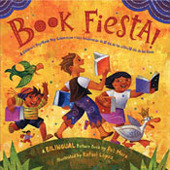 2010 Américas Commended List
2010 Américas Commended List
2010 Belpré Illustrator Medal Book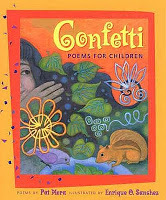 1996 Américas Commended List
1996 Américas Commended List
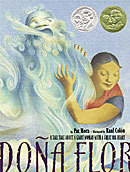 2006 Belpré Illustrator Medal Book
2006 Belpré Illustrator Medal Book
2006 Belpré Author Honor Book
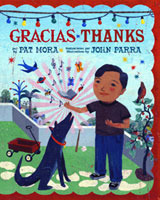 2010 Belpré Illustrator Honor Book
2010 Belpré Illustrator Honor Book
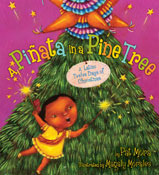 2010 Américas Commended List
2010 Américas Commended List
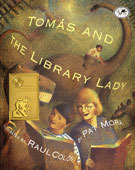 1997 Américas Award
1997 Américas Award
Commended Title
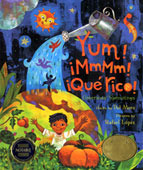 2008 Américas Award for Children's Literature
2008 Américas Award for Children's Literature
 2010 Américas Commended List
2010 Américas Commended List2010 Belpré Illustrator Medal Book
 1996 Américas Commended List
1996 Américas Commended List  2006 Belpré Illustrator Medal Book
2006 Belpré Illustrator Medal Book 2006 Belpré Author Honor Book
 2010 Belpré Illustrator Honor Book
2010 Belpré Illustrator Honor Book  2010 Américas Commended List
2010 Américas Commended List
 1997 Américas Award
1997 Américas Award Commended Title
 2008 Américas Award for Children's Literature
2008 Américas Award for Children's Literature
Published on January 22, 2011 12:41
January 13, 2011
15 Día Nuggets: #6 What Every Día Advocate Needs to Know and #8 Children's Books About Sharing Bookjoy
 Today, we're posting two more Día Nuggets! All available Nuggets are on my site, and you can also download a Nugget packet.
Today, we're posting two more Día Nuggets! All available Nuggets are on my site, and you can also download a Nugget packet.If you visit this blog or my web site, you know that April 2011, we're celebrating Día's 15th Anniversary. My web team and I were so pleased at comments about our first Díapalooza last April that we're having a second Díapalooza in 2011. To assist those of you planning Día celebrations at your schools, libraries, etc., we're sharing 15 Día Nuggets, 15 lists of 15 items to assist you in your planning. During Díapalooza 2011, we'll showcase the 15 Día Dynamos, 15 Mora Award winners and the 15 Día Nuggets, etc. Send us your I-días!
15 Día Nuggets for Día's 15th AnniversaryNugget #6 What Every Día Advocate Needs to Know
1. Día is a daily commitment to link all children to books, languages and cultures with annual, culminating celebrations in April.
2. Día honors both children and the power and pleasure of books.
3. Día enhances communities by supporting families and literacy.
4. Your effective advocacy requires vision and revision.
5. Advocacy is incredibly hard work requiring enthusiastic, reliable allies.
6. Parents are essential as valued members of your literacy team.
7. Growing the Día concept in your community and nationally requires optimism, energy, creativity, action, and collaboration.
8. Forming new partnerships requires patience and consistency.
9. Planning a Día celebration need not involve a large budget.
10. Many models (large and small) and suggestions are available on the Web.
11. Experienced celebration planners welcome your questions.
12. Día = Diversity in Action. (Coined by North Carolina librarians.)
13. Día needs visibility to reach its potential in our democracy. Publicize your celebrations, write articles for professional journals, use social networking options, volunteer to speak at conferences, etc.
14. Sharing bookjoy is fun, rewarding and important.
15. Día needs you and your unique talents.
Nugget #8 Children's Books About Sharing Bookjoy
1. Amadi's Snowman by Katia Novet Saint-Lot, illustrated by Dimitrea Tokunbo (Tilbury House)
2. Best Place to Read by Debbie Bertram and Susan Bloom, illustrated by Michael Garland (Random House)
3. Book! By Kristine O'Connell George, illustrated by Maggie Smith (Clarion)
4. Book Fair Day by Lynn Plourde, illustrated by Thor Wickstrom (Penguin)
5. Book Fiesta! Celebrate Children's Day, Book Day/ Celebremos El día de los niños, El día de los libros by Pat Mora, illustrated by Rafael López (HarperCollins)
6. A Library for Juana: The World of Sor Juana Inés by Pat Mora, illustrated by Beatriz Vidal (Knopf)
7. Lola Loves Stories and Lola at the Library by Anna McQuinn, illustrated by Rosalind Beardshaw (Charlesbridge)
8. Miss Brooks Loves Books! (and I don't) by Barbara Bottner, illustrated by Michael Emberley (Random House)
9. Reading Grows written and photographed by Ellen B. Senisi (Albert Whitman)
10. Reading Makes You Feel Good by Todd Parr, illustrated by Todd Parr (Little Brown)
11. Richard Wright and the Library Card by William Miller, illustrated by R. Gregory Christie (Lee & Low)
12. Storyteller's Candle/La velita de los cuentos by Lucia Gonzalez, illustrated by Lulu Delacre (Children's Book Press)
13. Tomás and the Library Lady by Pat Mora, illustrated by Raul Colón (Knopf)
14. Waiting for the Biblioburro by Monica Brown, illustrated by John Parra (Tricycle)
15. Yasmin's Hammer by Ann Malaspina, illustrated by Doug Chayka (Lee & Low)
Published on January 13, 2011 17:33
January 11, 2011
NYT Article to Ponder
I so admire the words and work of Nicholas Kristof. When I speak around our country, a land of significant economic disparities, I often say that children are sometimes proud of speaking Spanish related to the economic level of their families. Non-Latino children in private schools brag to me about speaking Spanish. Some Latino children whose families are struggling to survive in our country wonder whether to admit that they are bilingual. Sad irony. Let me know what you think of Kristof's op-ed piece "Primero Hay Que Aprender Español. Ranhou Zai Xue Zhongwen."
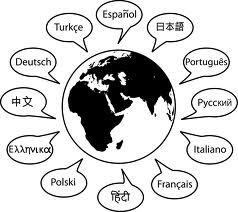
_____________________________________________________
New Contest for Bilingual Publishing
Ediciones Monarcas—a new, not-for-profit publisher of bilingual (Spanish-English) books for children—announces the Infinity Auto Insurance Leer Conmigo Award in Children's Literature . Each month they will award a $1,000 prize and publish the best submission received. A contest website is coming soon. For now, you can read guidelines and more information here.
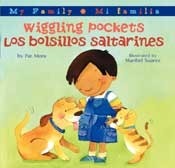


_____________________________________________________
New Contest for Bilingual Publishing
Ediciones Monarcas—a new, not-for-profit publisher of bilingual (Spanish-English) books for children—announces the Infinity Auto Insurance Leer Conmigo Award in Children's Literature . Each month they will award a $1,000 prize and publish the best submission received. A contest website is coming soon. For now, you can read guidelines and more information here.

Published on January 11, 2011 09:45
NYT Article to Ponder; New Contest for Bilingual Publishing
I so admire the words and work of Nicholas Kristof. When I speak around our country, a land of significant economic disparities, I often say that children are sometimes proud of speaking Spanish related to the economic level of their families. Non-Latino children in private schools brag to me about speaking Spanish. Some Latino children whose families are struggling to survive in our country wonder whether to admit that they are bilingual. Sad irony. Let me know what you think of Kristof's words.
 _____________________________________________________
_____________________________________________________
Ediciones Monarcas—a new, not-for-profit publisher of bilingual (Spanish-English) books for children—announces the Infinity Auto Insurance Leer Conmigo Award in Children's Literature . Each month they will award a $1,000 prize and publish the best submission received. A contest website is coming soon. For now, you can read guidelines and more information here.


 _____________________________________________________
_____________________________________________________Ediciones Monarcas—a new, not-for-profit publisher of bilingual (Spanish-English) books for children—announces the Infinity Auto Insurance Leer Conmigo Award in Children's Literature . Each month they will award a $1,000 prize and publish the best submission received. A contest website is coming soon. For now, you can read guidelines and more information here.

Published on January 11, 2011 09:45
January 6, 2011
A Día Dynamo for the New Year
 I am so grateful for Lydia Breiseth, manager of Colorín Colorado, who has been a loyal and creative Día supporter for years. She's our only Dynamo who works in the world of media, and I'm hoping that she'll teach us all. In your communities and nationally, how do we form lasting partnerships with those in the TV, radio, Web, and print media spheres who can be Día advocates? I finally had the pleasure of meeting Lydia last fall. She'll soon post the interview that took place when we met. She's fabulous!
I am so grateful for Lydia Breiseth, manager of Colorín Colorado, who has been a loyal and creative Día supporter for years. She's our only Dynamo who works in the world of media, and I'm hoping that she'll teach us all. In your communities and nationally, how do we form lasting partnerships with those in the TV, radio, Web, and print media spheres who can be Día advocates? I finally had the pleasure of meeting Lydia last fall. She'll soon post the interview that took place when we met. She's fabulous!I. When and how did you become interested in sharing bookjoy?
LB: I was an avid reader as a child, partly because I was the youngest in my family and had lots of people to read to me! Whenever my oldest sister arrived home from college, the first thing she would do was drop her bags on the floor and curl up with me to read on our green couch in the living room.
Now in my work at Colorín Colorado, I have the great privilege to recommend children's books that reflect a wide variety of cultures and experiences.
2. How did you first learn about Día and what has been your experience with Día?
LB: I first learned of Día when I came to Colorín Colorado, and every year I track Día events around the country. It has been wonderful to see Día spread like wildfire as more communities look for ways to bring Latino families together around reading.
 Día is great for all libraries because it gives educators and librarians who may be new to working with Latinos a model that can serve as a multicultural/multilingual bridge. It also encourages librarians to take a fresh look at their bilingual/Spanish-language books, resources, and literacy programs.
Día is great for all libraries because it gives educators and librarians who may be new to working with Latinos a model that can serve as a multicultural/multilingual bridge. It also encourages librarians to take a fresh look at their bilingual/Spanish-language books, resources, and literacy programs.3.What are your hopes for Día 2011, Día's15th Anniversary?
LB: I hope that it brings a renewed sense of focus to the importance of serving immigrant/bilingual families at the library. The library may be the most important – and only – link that our families have to their community and ESL classes, as well as to the importance of reading and sharing books.
4. What helpful tip(s) do you have for those organizing a Día event for the first time?
LB: The most successful Día events are those that embrace everyone and match the community and its needs! It's ok to:
1) start small
2) ask community members for input
3) remember that not all Día events will look the same!
5.What is your favorite example of Bookjoy as either a child or an adult?
LB: When I was an ESL teacher in Ecuador, I decided that my intermediate adult students would read Charlotte's Web. It was challenging with words like "trough" and "gosling!" My students treated me to a picnic shortly before I left Ecuador, and as we waited for the bus on our way, we saw an indigenous woman herding some geese and goslings down the street. One of my students looked at me and said with a grin, "Terrific, terrific, terrific!"
 After all of our struggles with the book, it was so wonderful to know that the humor and joy of the story had still reached my students!
After all of our struggles with the book, it was so wonderful to know that the humor and joy of the story had still reached my students! 6. What are you reading now?
LB: I recently finished Miracles on Maple Hill by Virginia Sorensen, which won the 1957 Newbery Medal. Sorensen's exquisite descriptions of Pennsylvania's changing seasons and the magic of making maple syrup struck a chord with me since I helped with the sugaring at a farm camp in a similar setting where I grew up in Pennsylvania.
The book also captures the pain and confusion of a young girl coming to grips with the ways her father has changed after returning from war (World War II). Even though the book is more than 50 years old, her emotions and those of her family ring as true today as they ever have, and they may provide an important bridge for military families who are adjusting to big changes.
( View a 2007 video interview with Pat on Colorín Colorado . Interview conducted by David Meissner.)
Published on January 06, 2011 11:27
Pat Mora's Blog
- Pat Mora's profile
- 96 followers
Pat Mora isn't a Goodreads Author
(yet),
but they
do have a blog,
so here are some recent posts imported from
their feed.



